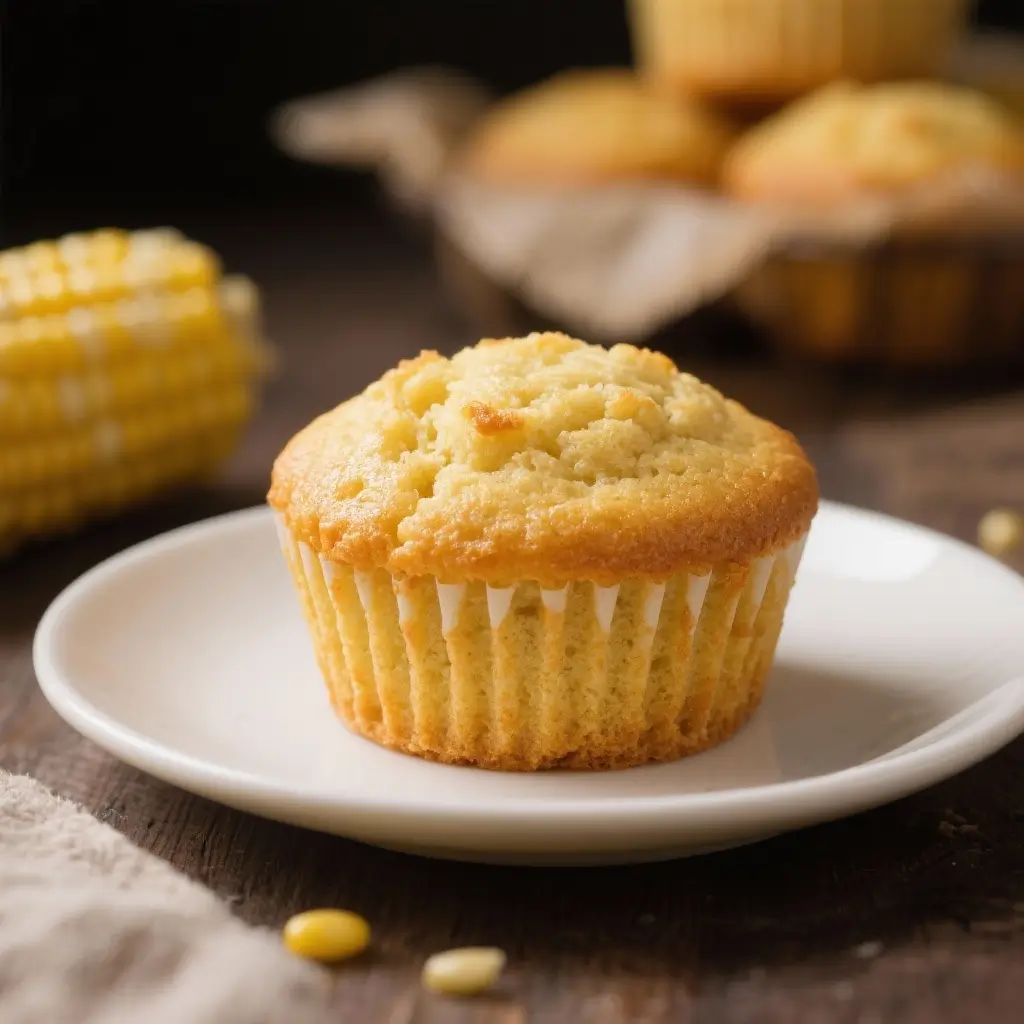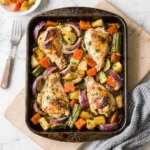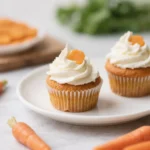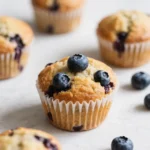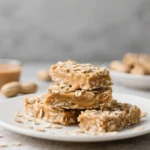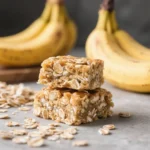Corn Muffins: A Hearty Classic with Southern Roots
Corn muffins are a beloved staple in American cuisine, especially in the southern United States. With their golden crust, soft crumb, and subtly sweet corn flavor, they’re the perfect accompaniment to soups, stews, chili, or enjoyed on their own with a smear of butter. Whether you’re baking them for breakfast, brunch, or as a comforting side dish, corn muffins bring warmth and nostalgia to any table. This comprehensive guide dives deep into everything you need to know about making the perfect batch—from history and ingredients to tips, variations, health considerations, and frequently asked questions.
The History of Corn Muffins
The origins of corn muffins trace back to Native American culinary traditions, where ground corn (maize) was used to make various types of bread long before European settlers arrived. When colonists came to North America, they adapted these indigenous methods, combining cornmeal with European baking techniques. The first written recipes resembling modern corn muffins appeared in American cookbooks during the 18th and 19th centuries.
Traditional “hoe cakes” or “johnnycakes” were cooked on flat surfaces like griddles or even hoes—hence the name—and were a simple mixture of cornmeal, water, and salt. As baking powder became widely available in the late 1800s, leavened corn muffins began to emerge, allowing for lighter, fluffier textures. By the 20th century, corn muffins had become a standard in American households, particularly in the South, where they were often served alongside barbecue, collard greens, or fried chicken.
Today, corn muffins continue to evolve. While traditional recipes remain popular, modern versions incorporate ingredients like honey, cheese, jalapeños, blueberries, and even chocolate chips, reflecting diverse regional tastes and creative interpretations across the country.
Ingredients Breakdown: What Makes Corn Muffins So Delicious?
The magic of corn muffins lies in the balance of a few key ingredients. Each plays a vital role in texture, flavor, and structure:
- Cornmeal: The star ingredient. It provides the signature grainy texture and earthy-sweet corn flavor. Yellow cornmeal is most common, but white or blue cornmeal can be used for visual and flavor variation.
- Flour (All-Purpose): Added to help bind the batter and provide structure. Without it, muffins may be too crumbly.
- Baking Powder & Baking Soda: These leavening agents help the muffins rise and achieve that tender, fluffy interior. Baking soda also reacts with acidic ingredients (like buttermilk) to enhance lift.
- Sugar: Balances the natural earthiness of cornmeal. Amounts vary depending on whether you prefer sweet or savory muffins.
- Eggs: Provide moisture, richness, and act as a binder to hold the ingredients together.
- Butter or Oil: Adds tenderness and moisture. Butter imparts rich flavor; oil results in a more uniform crumb.
- Milk or Buttermilk: Liquids that hydrate the dry ingredients. Buttermilk adds tanginess and activates baking soda for extra lift.
- Salt: Enhances overall flavor and balances sweetness.
Optional additions include cheese, herbs, spices, fruits, or vegetables, which allow for endless customization based on your taste preferences.
Step-by-Step Recipe for Classic Corn Muffins
Follow this detailed recipe to create light, golden, and perfectly textured corn muffins at home. Yield: 12 standard muffins.
Ingredients
- 1 cup yellow cornmeal
- 1 cup all-purpose flour
- 1/4 cup granulated sugar (adjust to taste)
- 2 1/2 teaspoons baking powder
- 1/2 teaspoon baking soda
- 1/2 teaspoon salt
- 1 cup buttermilk (or substitute with milk + 1 tbsp vinegar)
- 1/3 cup unsalted butter, melted (or vegetable oil)
- 1 large egg
- 1 teaspoon vanilla extract (optional, enhances sweetness)
Directions
- Preheat oven to 400°F (200°C). Line a 12-cup muffin tin with paper liners or grease lightly with butter or non-stick spray.
- Mix dry ingredients: In a large bowl, whisk together cornmeal, flour, sugar, baking powder, baking soda, and salt until well combined.
- Combine wet ingredients: In a separate bowl, whisk together buttermilk, melted butter, egg, and vanilla extract (if using).
- Combine wet and dry: Pour the wet ingredients into the dry ingredients. Stir gently with a spatula just until moistened. Do not overmix—lumps are okay. Overmixing leads to tough muffins.
- Fill muffin cups: Divide the batter evenly among the 12 muffin cups, filling each about 3/4 full.
- Bake for 16–20 minutes, or until the tops are golden brown and a toothpick inserted into the center comes out clean.
- Cool: Let the muffins cool in the pan for 5 minutes, then transfer to a wire rack to cool completely or serve warm.
Pro Tips for Perfect Corn Muffins Every Time
- Don’t overmix: Stir the batter only until the ingredients are combined. Overmixing develops gluten, leading to dense, rubbery muffins.
- Use buttermilk: It adds acidity that reacts with baking soda, resulting in a lighter texture and subtle tang. If you don’t have buttermilk, make a quick substitute by adding 1 tablespoon of white vinegar or lemon juice to 1 cup of milk and letting it sit for 5–10 minutes.
- Room temperature ingredients: Ensure your egg and buttermilk are at room temperature to promote even mixing and better rise.
- Check your leaveners: Baking powder and baking soda lose potency over time. Test them by mixing a small amount with hot water (baking powder) or vinegar (baking soda). If they don’t bubble, replace them.
- Grease the pan properly: Even when using liners, a light spray or brush of butter prevents sticking and enhances browning.
- Avoid opening the oven: Resist the urge to peek during the first 15 minutes of baking. Sudden temperature changes can cause muffins to collapse.
- Store correctly: Keep cooled muffins in an airtight container at room temperature for up to 2 days. For longer storage, refrigerate for up to 5 days or freeze for up to 3 months.
Variations and Customizations
Corn muffins are incredibly versatile. Here are some popular ways to customize your recipe:
- Savory Cheddar & Herb Muffins: Add 1 cup shredded sharp cheddar cheese, 1/4 cup chopped chives, and a pinch of garlic powder to the batter.
- Jalapeño Corn Muffins: Fold in 1–2 diced jalapeños (seeds removed for less heat) and 1/2 cup Monterey Jack cheese for a spicy kick.
- Honey Corn Muffins: Replace sugar with 1/3 cup honey and reduce buttermilk by 2 tablespoons to balance moisture.
- Blueberry Corn Muffins: Gently fold in 1 cup fresh or frozen blueberries. Toss in a little flour first to prevent sinking.
- Whole Grain Version: Substitute half the all-purpose flour with whole wheat flour and use stone-ground cornmeal for a nuttier flavor and added fiber.
- Dairy-Free: Use plant-based milk (like almond or oat) with 1 tbsp vinegar instead of buttermilk, and swap butter for coconut oil or vegan margarine.
- Gluten-Free: Use a 1:1 gluten-free flour blend and ensure your cornmeal is certified gluten-free to avoid cross-contamination.
- Mini Corn Muffins: Bake in a mini muffin tin for 10–12 minutes—perfect for parties or snacks.
Health Considerations and Nutritional Value
Corn muffins can be part of a balanced diet when enjoyed in moderation. Here’s a general nutritional breakdown per muffin (based on classic recipe, one of twelve):
- Calories: ~180–200
- Total Fat: 7–9g (mostly from butter or oil)
- Saturated Fat: 3–4g
- Carbohydrates: 28–30g
- Sugars: 6–8g (can be reduced or substituted with natural sweeteners)
- Protein: 3–4g
- Fiber: 1–2g (increases with whole grain substitutions)
- Sodium: ~200–300mg
Health Tips:
- To reduce sugar, cut it down to 1–2 tablespoons or use maple syrup or mashed banana for natural sweetness.
- Boost fiber by replacing half the all-purpose flour with whole wheat or adding ground flaxseed.
- Use heart-healthy oils like avocado or olive oil instead of butter.
- Add vegetables like corn kernels, grated zucchini, or pumpkin puree to increase nutrients and moisture.
- Be mindful of portion size—while delicious, corn muffins are calorie-dense due to fat and carbohydrates.
For individuals managing diabetes or blood sugar levels, opt for low-sugar versions and pair with protein-rich foods to stabilize glucose response.
Frequently Asked Questions (FAQ)
Q: Why are my corn muffins dry?
A: Dry muffins are often caused by overbaking, too much flour, or insufficient fat or liquid. Measure ingredients accurately using a kitchen scale if possible, and avoid overmixing.
Q: Can I make corn muffins without eggs?
A: Yes! Substitute each egg with 1/4 cup unsweetened applesauce, mashed banana, or a commercial egg replacer. The texture may be slightly denser but still tasty.
Q: How do I store corn muffins?
A: Store cooled muffins in an airtight container at room temperature for 1–2 days. For longer shelf life, refrigerate for up to 5 days or freeze for up to 3 months. Reheat in the oven or microwave before serving.
Q: Can I use corn flour instead of cornmeal?
A: No—corn flour is finely ground and lacks the gritty texture of cornmeal. Using it will result in a very different product. Stick to cornmeal for authentic texture.
Q: Why didn’t my muffins rise?
A: Check the freshness of your baking powder and baking soda. Also, ensure your oven is properly preheated and avoid opening the door too early. Overmixing can also deflate the batter.
Q: Can I add canned corn to the batter?
A: Absolutely! Drain and pat dry 1/2 to 1 cup of canned or frozen corn before folding it into the batter. It adds sweetness and moisture.
Q: Are corn muffins gluten-free?
A: Traditional recipes contain all-purpose flour, so they are not gluten-free. However, you can make them gluten-free using a gluten-free flour blend and certified GF cornmeal.
Summary
Corn muffins are a timeless, adaptable treat that blends rustic charm with comforting flavor. From their Native American roots to modern kitchen innovations, they remain a favorite across generations.
